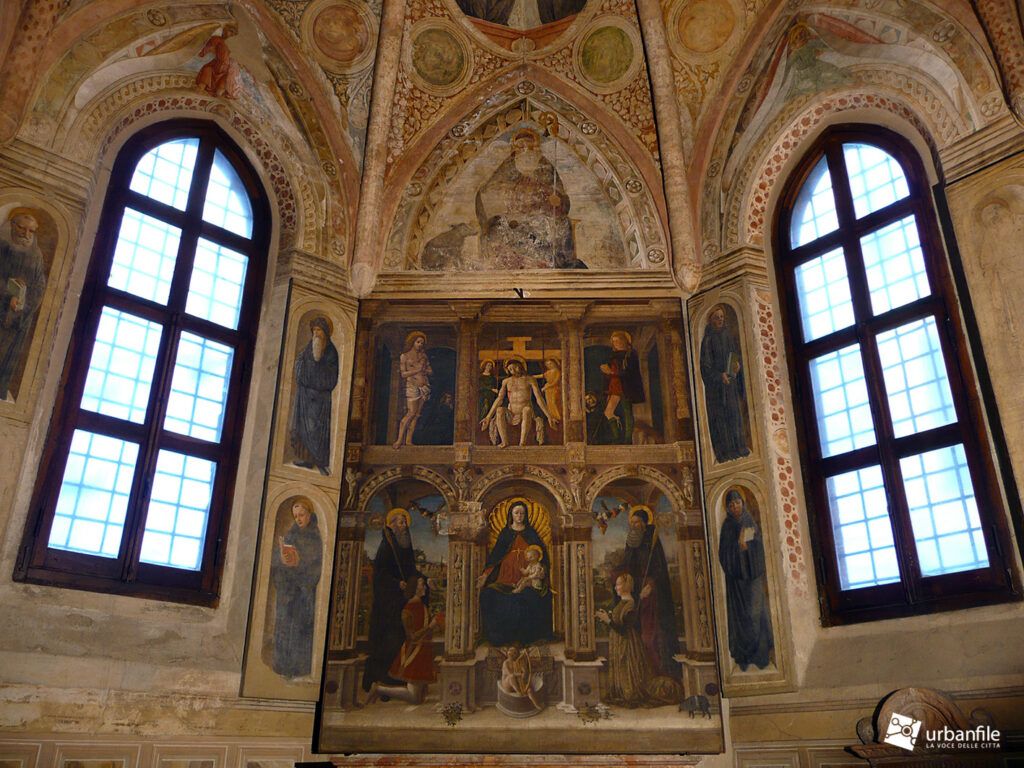There Church of San Pietro in Gessatelocated in front of the Court of Milan, has been identified as one of the seven most threatened cultural sites in Europe. This worrying news came via the “7 Most Endangered 2024” program, promoted to support European monuments and sites in precarious conditions that require both public and private interventions.

“7 Most Endangered 2024” is an initiative of Europa Nostra, the pan-European federation dedicated to safeguarding cultural and natural heritage. The selection of sites is based on the exceptional cultural and heritage value of each, as well as the imminent danger that threatens their integrity.
The church of San Pietro in Gessate it is now officially recognized as a priority point of interest for Europa Nostra. This selection not only draws attention to the critical situation of the site, but also opens the possibility of receiving funds for conservation interventions. In addition to the Milanese church, six other sites have been selected, spread across Turkey, Serbia, Greece, France and another Italian location (the synagogue of Siena), which will each receive a financial contribution of 10,000 euros from the European Bank for investments to start the first rescue activities.
But what are the reasons that led Europa Nostra to focus on this site in the heart of Milan? San Pietro in Gessatean artistic jewel of Lombard fifteenth centuryfaces serious conservation problems, especially regarding its priceless fresco cycles.






Built in the 15th century, probably designed by architect Guiniforte Solari, the church was an important center of reform belonging to the Benedictine order. Over the centuries, various restoration interventions have been carried out, including that of the façade in 1912, followed by the reconstruction after the damage suffered during the Second World War in 1943.
However, despite the efforts made, the 15th century fresco cycles, considered among the most significant works of Lombard painters and other European artists, are now in a critical state. The restoration interventions of the 1950s and 1990s were not sufficient to completely preserve these precious works of art, and some chapels, such as that of Sant’Antonio and Sant’Ambrogio/Grifi, are currently in worrying conditions. The chapel of San Mauro, the only one remaining in the right nave, requires urgent intervention.
Despite past interventions, the site continues to deteriorate rapidly and available resources are not sufficient to undertake the necessary restoration work. Furthermore, climate change and the increase in extreme weather events pose further threats to both indoor and outdoor conservation.
The urgent need for intervention, both public and private, to preserve this precious artistic and cultural heritage for future generations is clear.


















Since the end of the thirteenth century, there is evidence of the existence of a church of the Humiliati dedicated to Saints Peter and Paul and called in Glaxiate, with an adjoining monastery. The second fourteenth century and the first fifteenth century saw the progressive decline of the monastery until, in 1433, a papal brief suppressed the provostship of the SS. Pietro e Paolo transforming it into the priory of the Benedictine congregation of Santa Giustina in Padua.
The reconstruction work on the church began around 1460, when Acerrito and Pigello Portinari, responsible for the Milanese branch of the Banco dei Medici, financed the construction of the choir and the main apse, the chapter house and the sacristy (a marble coat of arms of the Portinari family is still visible outside the choir).
Some traces of the original apse of the church remain in the square access room with an umbrella roof and in the hanging capitals of the sacristy. In 1571, by will of Abbot Paolo Orio, it was extended and raised, giving rise to the high and deep volume that still exists today.

The archives are generous with information from which we can draw testimony to the rapid rise of the noble chapels on the sides of the nave, first on the left side, then on the right. These chapels are linked, due to their pictorial and sculptural furnishings, to the patronage of illustrious people gravitating around the ducal court, who had decided to place their burial in S. Pietro in Gessate.
The name of the architect responsible for the construction site is not attested in the documents, but the shapes, structures and decorative elements certainly belong to thecultural sphere of the Solari. In particular the detection of the marked affinities between San Pietro in Gessate and Santa Maria delle Grazie in Milan it brought together the attributive hypotheses on the personality of Guiniforte, who around 1460 reached the peak of his professional fortune and was involved in the most significant Milanese construction sites.
The church has a longitudinal Latin cross plan with three naves, a projecting transept with semi-octagonal apses and five chapels on each side, also semi-octagonal, the result of a unitary project in the coherence of shapes and dimensions. The naves are divided by seven ogival arches set on granite columns replacing the composite pillars, topped by capitals with foliate motifs. The roof of the central body is made with cross vaults, characterized by bullnose ribs and keystones with busts in relief; the side chapels are instead covered by umbrella vaults. A rich pictorial decoration underlines the play of the architectural members.




The Solarian system set up in this way has been modified several times over the centuries: after the aforementioned sixteenth-century expansion, the apse area was again subject to transformation in the Baroque era, when the bell tower (still visible in 1950) and the three portals were also renovated. of access. The restoration conducted by Diego Brioschi in the years 1910-12 he was particularly interested in the gabled façade, with the elimination of the two lateral entrances and their replacement with tall ogival single-lancet windows, the revision of the central rose window and the openings and the addition of clay acroteria in correspondence with the four buttresses and the top of the salients.

After the serious damage caused by bombings of 1943 and the subsequent restorations, the cloister presents itself today with elegant full-centre arches on slender columns, a double stringcourse frieze and windows punctuated by simple pilasters on the upper floor.







The chapels on the left side of the church, with their pictorial and plastic decoration, constitute a rich repertoire of Lombard figurative culture between the end of the fifteenth and the beginning of the sixteenth century.
The left transept of the church preserves the tomb of Ambrogio Grifi, apostolic prothonotary, ducal councilor and architect of the Sforza family, who financed its extraordinary decoration.
Today, as we were saying, this graceful and precious church suffers from neglect, in need of major restorations and greater attention and consideration.

- Image references: Roberto Arsuffi, INTESA SANPAOLO HISTORICAL ARCHIVE, Milano Sparita, Milano ufficio.it
- San Pietro in Gessate, Renaissance, Giovanni Donato Montorfano, Guinforte Solari, Quattrocento Lombardo, Guiniforte Solari, Diego Brioschi, restoration, Europe














































